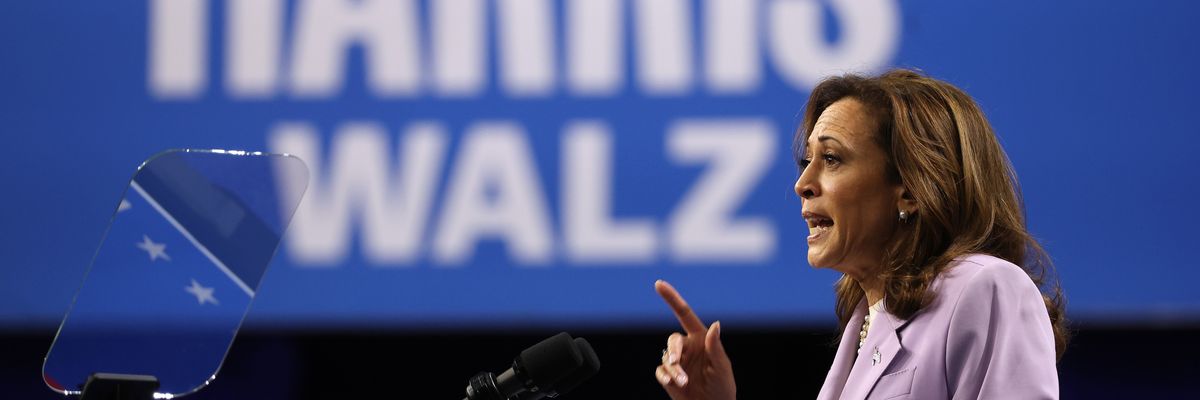As U.S. Vice President Kamala Harris and former President Donald Trump get ready to debate for the first time this week, what can we expect from their campaigns in terms of taxes?
Harris endorses multiple proposals to generate revenue from the richest people and the biggest corporations and deliver a middle-class tax cut—with the former paying for the latter. Trump would cut some middle-class taxes but promotes a new tariff tax on imports that would hike the price of nearly everything Americans purchase and, doubling down on past practice, he’d slash taxes for millionaires and corporations. He hasn’t identified a single business or billionaire that should pay more.
When Trump and congressional Republicans passed the 2017 tax law, they made massive tax cuts for corporations permanent but set the individual cuts, which were heavily skewed to the extremely wealthy, to expire at the end of 2025. This means taxes are on next year’s policy agenda in a way that rarely comes along. The approaches articulated by the campaigns would pull the nation in profoundly different directions.
Trump Proposals
Trump says he would again slash corporate tax rates, keep all corporate cuts from the 2017 tax law, extend 2017’s expiring cuts for everyone including the uber-wealthy, and impose large tariffs that fall on everyone who spends money on anything.
Trump’s tariff tax proposals—60% tariff taxes on imports from China and 20% on all other imports—would cost the typical American household over $2,600 a year according to economist Kim Clausing. Earlier analysis of a previously-discussed 10 percent worldwide tariff tax shows an increase in inflation resulting from the plan, which would also generate $2.8 trillion in revenue over the next decade, raised from consumers.
Much of that revenue would go to corporations. When lawmakers cut the corporate rate from 35% to 21% in 2017, corporate tax payments plummeted, and huge, profitable corporations continued to pay far below the statutory rate. We’d see this on steroids if Trump slashed the corporate rate to 15%. Such cuts increase income and racial inequality and send a massive windfall—40 cents of every dollar—to foreign investors.
The law that the Trump administration passed in 2017 delivered enormous tax cuts to those in the top 1%, a narrow sliver of well-off people with income over $800,000 a year. These individual cuts for the rich expire in 2025, but the Trump campaign wants to make them permanent, sending almost two-thirds of that money to the richest fifth of Americans. This would cost more than $280 billion in 2026 alone, slashing revenue that could otherwise provide tax cuts for middle-income Americans, reduce the national debt, or fund childcare, healthcare, or infrastructure.
Republican Vice Presidential candidate J.D. Vance has mentioned more than doubling the Child Tax Credit but has provided few details and Trump has not signed on.
Harris Proposals
Harris backs most of the revenue raisers and middle class tax cuts laid out in President Joe Biden’s 2025 budget. The revenue components raise nearly $5 trillion over a decade, entirely from wealthy people and corporations, reducing inequality, both economic and racial, and generating funds for things the American people need.
Harris plans to boost revenue from corporations by raising the corporate rate, increasing the corporate minimum tax, increasing the stock buyback tax, and reining in corporate offshore tax avoidance. She’d better tax the wealthy by allowing expiration of the parts of the 2017 tax law that exclusively help those making more than $400,000. For those who make over $1 million a year, Harris would eliminate tax breaks on capital gains and dividends. For incomes exceeding $100 million a year, she’d tax currently exempt investment income that many billionaire CEOs receive. These provisions would do much to reform a tax code that most Americans say raises too little from corporations and the wealthy.
Harris would fully extend temporary tax cuts from the 2017 tax law for people earning less than $400,000 and try a new down-payment assistance program for some first-time homebuyers. She’d also expand the Child Tax Credit to $6,000 for newborns, $3,600 for children up to age five, and $3,000 for older children. This is one of the best and most well-proven ways to cut poverty, reduce inequality, and help middle-class families.
Tip Gimmick
Both campaigns support eliminating taxes on tips. This could encourage wealthy professionals to reclassify fees as tips and there are better ways to help workers—raising the minimum wage, eliminating the paltry $2.13 sub-minimum wage, and increasing the Earned Income Tax Credit. Harris would limit her exemption to workers earning less than $75,000—an improvement Trump leaves out—but this doesn’t redeem a fundamentally flawed proposal.
In Sum
Campaign proposals reveal two very different paths. The Harris campaign seems eager to tax the rich and corporations, cut taxes for middle-income taxpayers, reduce poverty, reduce inequality, and raise revenue for public spending. Trump vows to preserve and expand tax cuts for the wealthiest people and corporations and says little about how to pay for that beyond a tariff that raises much less than Harris’ plans and falls on consumers. His proposals would inevitably force cuts to important public programs or run up the national debt.
The entire tax code is up for debate in 2025. Our system asks far too little of wealthy people and corporations. Americans should listen closely to both campaigns and push for policies that raise more from those most able to pay, give tax cuts to those who most need them, and generate resources to invest in public priorities.
